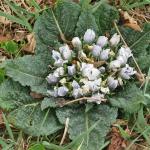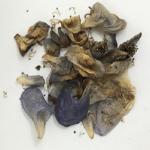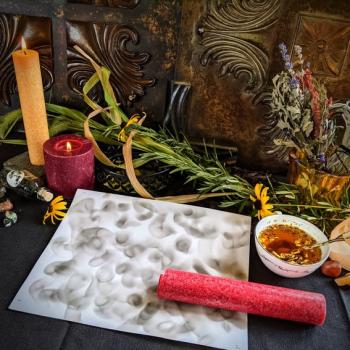Atropa belladonna-Deadly Nightshade
Banewort, Devil’s Cherries, Dwale, Dwaleberry, Sorcerer’s berry, Tolkirsch.
This plant has always had a seductive and magical quality to me, and many others who have fallen under her hypnotizing spell. For example, Robert Cochrane specialized in Atropa belladonna and her alkaloids, which eventually lead to his strange death. I remember first hearing about this plant in the movie Practical Magic, where Aunt Jet’s Belladonna played a central role in the movie, causing the death of Jimmy Angelov. The role this plant has played throughout history is evidence of the power this plant holds. I like to think of Belladonna as my plant spirit familiar. She is a witch’s ally, and beyond some of the more obscure medicinal uses for this plant, this is a plant of magic, witchcraft, and the Underworld.
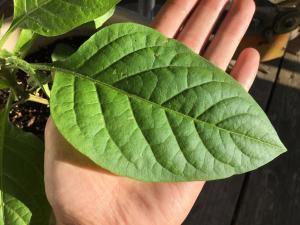
Here in one place I am going to attempt to create a list of all of the historical references, folklore, and modern insights from myself and other practitioners on this path, that I have personally gathered over the years. The lore contained here is six years worth of reading, research, and personally working with this plant. It encompasses multiple different sources from different cultures over different time periods, and I will do my best to give references where available. I hope this will serve as a starting point for those interested in working with this mysterious and powerful plant, and while ingestion of this poisonous plant is not recommended the ritual and magical applications are numerous and are the main focus of my studies. While I may inevitably list some chemical or medicinal information it is by no means my area of expertise, however the plant’s chemistry and action on human physiology does provide some insight into the spiritual applications of this plant.
Belladonna’s Magical Uses
As a gatekeeper plant, she opens the energy centers, expands awareness to spiritual realms. Opens gateways to other realms of consciousness, trance and the other world. She can also help us in removing of toxic situations and people (Saturn) and providing offensive protection (Mars). Belladonna is a combination of Saturnian energy being a poisonous plant, and Martial force due to her aggressive and protective nature. Also at times she acts as an Herb of Venus, with her seductive qualities.
Her spirit has been described as one with dark hair and dark eyes. (The Plant Spirit Familiar, By Christopher Penczak) She is described as having the ability to open the gates of the Middle World, allowing us to explore the subtle reality while still on this plane and in body.
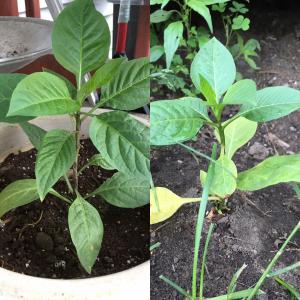
Appropriate for works of necromancy, specifically calling the dead to the Middle World for assistance. Personal experience recommends employing appropriate protective measures before attempting this. Her affinity with Witchcraft makes her a perfect plant for offerings and summoning the Mighty Dead. She is able to connect with and reach out to those individuals who have walked the Crooked Path before us, and have chosen to remain behind to help other practitioners, thereby continuing their own work. Belladonna is a quintessential plant of the traditional/classical witchcraft current.
As a charm, fetish, or talisman Belladonna has numerous applications within the realm of natural magic. The ways this plant can be used to create vessels for spirits or talismans of protection barely scratches the surface of the practical magical applications for this power enhancing herb. The spirit of the plant also guides the practitioner to new and insightful uses for the plant material.
As a Witch’s Power Plant or Magical Catalyst it can be added to any formula or charm for added power. Specifically when connected to the power of the witch’s familiar spirit. As an Herb of Mastery this plant can be utilized to bring success to all one’s endeavors. She is known for destroying her enemies by subversive means; binding their actions and exposing their secrets. She is particularly appropriate for magical warfare, lending her Martial qualities and berserker rage to magical weapons when enchanting them. The juice from the berries or leaves can be used to anoint objects of magical protection, divination, and necromantic fetishes. It can also be made into a tincture for the same purposes, which lasts indefinitely.
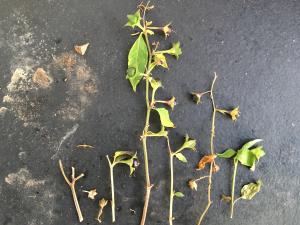
Historical/Mythological Associations and Correspondences
Atropa belladonna, is named for Atropos, one of the three fates in Ancient Greek mythology. This particular fate was responsible for cutting the thread of life. Her second name has associations with the Italian goddess of battle Bellona.
A powerful plant spirit, associated with witchcraft, the battlefield, sexuality and death, and protection.
Solata– one of many other names used to refer to Deadly Nightshade (Belladonna), this name is from the Old English Herbarium. A Modern Version of the Text
Traditionally used in ritual smoking blends. The leaves and berries would have been added to Cannabis and sometimes the Amanita muscaria (magic mushroom).
Chemical/Medicinal Information
Belladonna’s psychoactive and medicinal properties are due to the presence of chemicals known as alkaloids, which naturally occur in members of the Nightshade family.
Notes on Belladonna Alkaloids
The most commonly mentioned alkaloids in these plants are Atropine, Scopolamine, Solanine and Hyoscyamine.
Some sources say that the alkaloid content is the highest during May and June. Alkaloids act as a kind of defense system for the plant as well, and will increase with more sun exposure. Insect predation will also cause alkaloid content to increase. There are a number of variable that influence the plant’s alkaloid content. The same source also mentions that 1-2 berries are all that are needed to create minor perceptual changes. The higher hallucinogenic dosage of 4-9 berries is quickly approaching lethal levels.
Her greatest power is as a hypnotic, and has been described by some as greater than her sister Opium in this way.
It is said that old-time cunning folk knew how to add small amounts of the tinctured berry to red wine to induce a deep trance. There are very few instances where you see the plant used by itself, it is normally always part of some kind of formula or means of delivery.
Some of the less uncomfortable side effects of Belladonna overdose are: light sensitivity and blurred vision, a sense of floating and spatial expansion beyond the body, drying of bodily fluids and inability to urinate (very uncomfortable), slowed heart rate, sweaty hands, and a sense of being surrounded by the dead. I can personally attest to experiencing all of these symptoms after drinking an infusion of the plant material on Samhain Eve.
Potential Dosage Guide (ayurtimes.com) – this is a great resource on medicinal herbalism, specifically the ancient tradition of Ayurveda from ancient India. It is still widely practiced today, and utilized herbs from the Nightshade family for their medicinal properties.
They suggest single doses of different types of preparations for the medicinal benefits of the plant. These doses can be taken 2-3 times a day. This helped give me an idea of what a safe medicinal dose is compared to the higher dosage needed to achieve visions. The amount needed for a “belladonna trip” is technically an overdose, and it is your body’s response to being poisoned. The plant can be used ritualistically in much safer and smaller amounts and still induce trance.
Powdered Leaves: 50-100 mg
Root Powder: 25-100 mg
Juice of Leaves: 1-4 drops
Traditional Water Extract: 5-10 mg
Tincture: 1-3 drops
Dioscorides
In his research on the plant, mentions that one drachm (3.4 grams) of Belladonna root infused in red wine is sufficient to bring about hallucinations, and 4 grams or more causes death. This is a very high dose as you can see comparatively, even being diluted in an entire bottle of wine. We are utilizing these plants to assist in inducing trance and removing some of the inhibitions we have that keep us from using our psychic senses. Hallucinations are not the spiritual visions that we as spiritual practitioners seek. The amount of material required to achieve such intense experiences comes very close to that of a lethal dose.
Resources for Further Research
The Witching Herbs, by Harold Roth (alchemy-works.com and thealchemistsgarden.com)
The book, website and blog have loads of information on a wide variety of plants. There is a chapter in the book on Belladonna that provides loads of information, specifically on cultivation and harvesting.
A Poisoned Chalice: The Death of Robert Cochrane
Pharmako Gnosis: Plant Teachers and the Poison Path. by Dale Pendell

